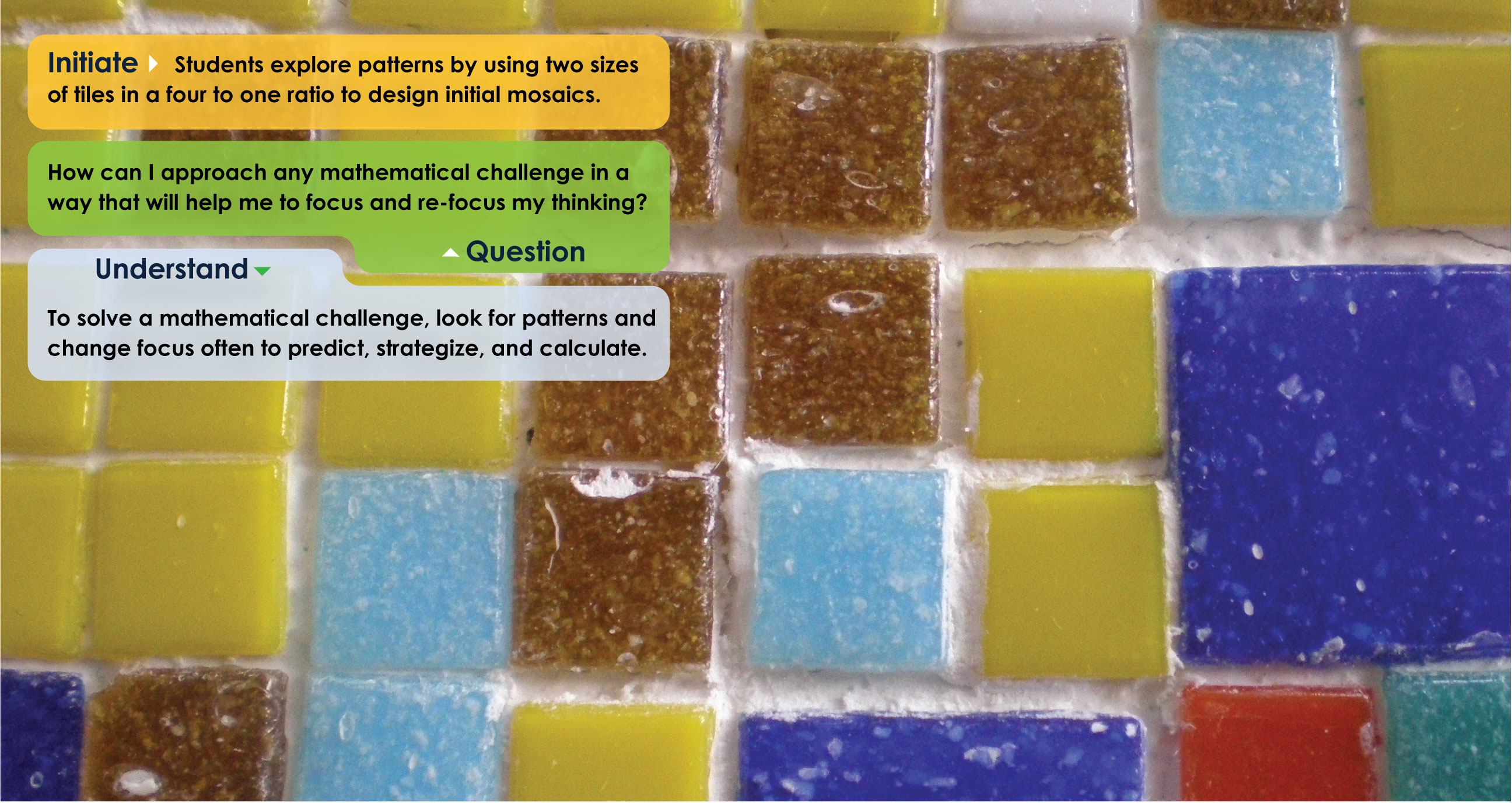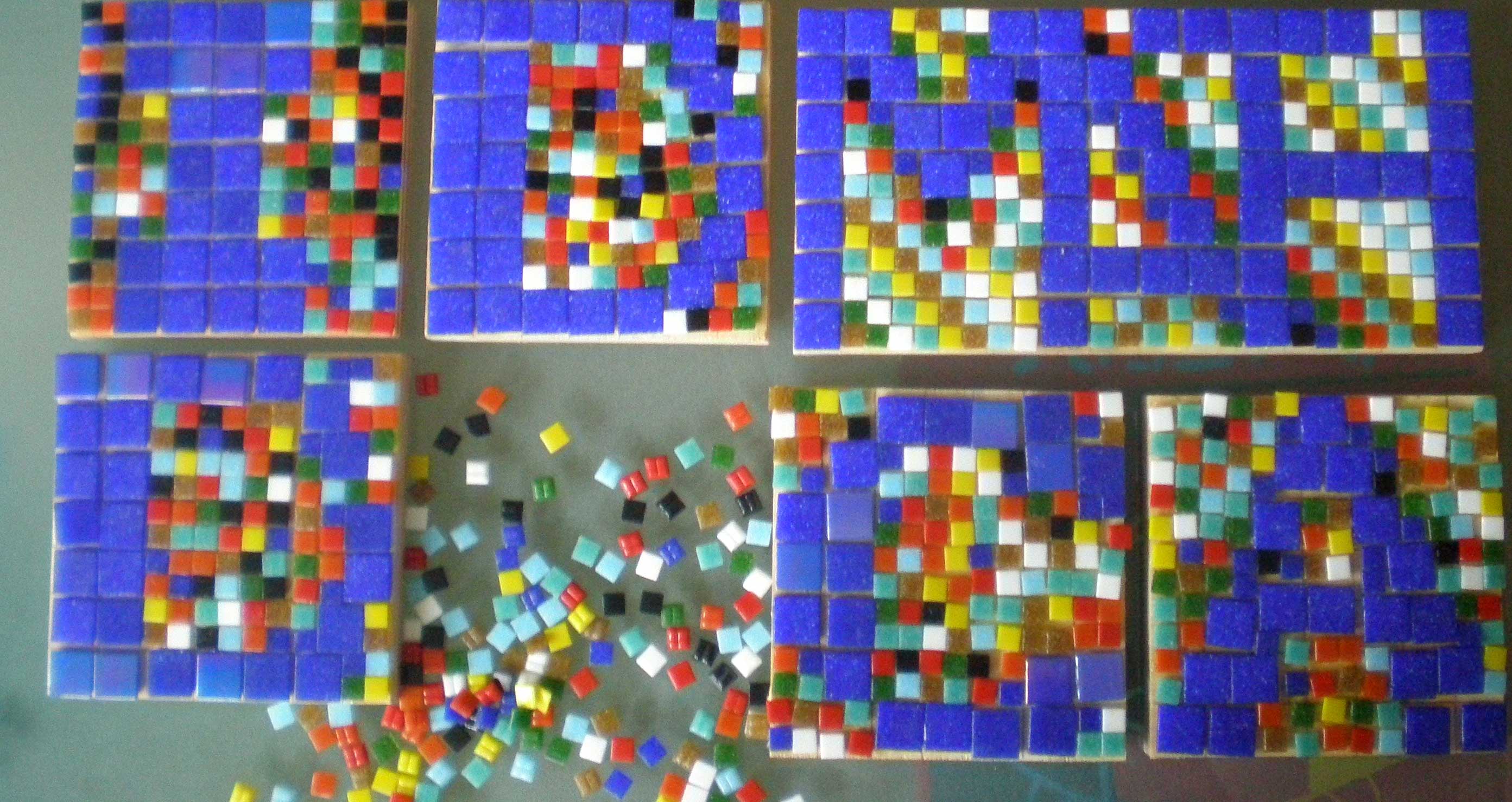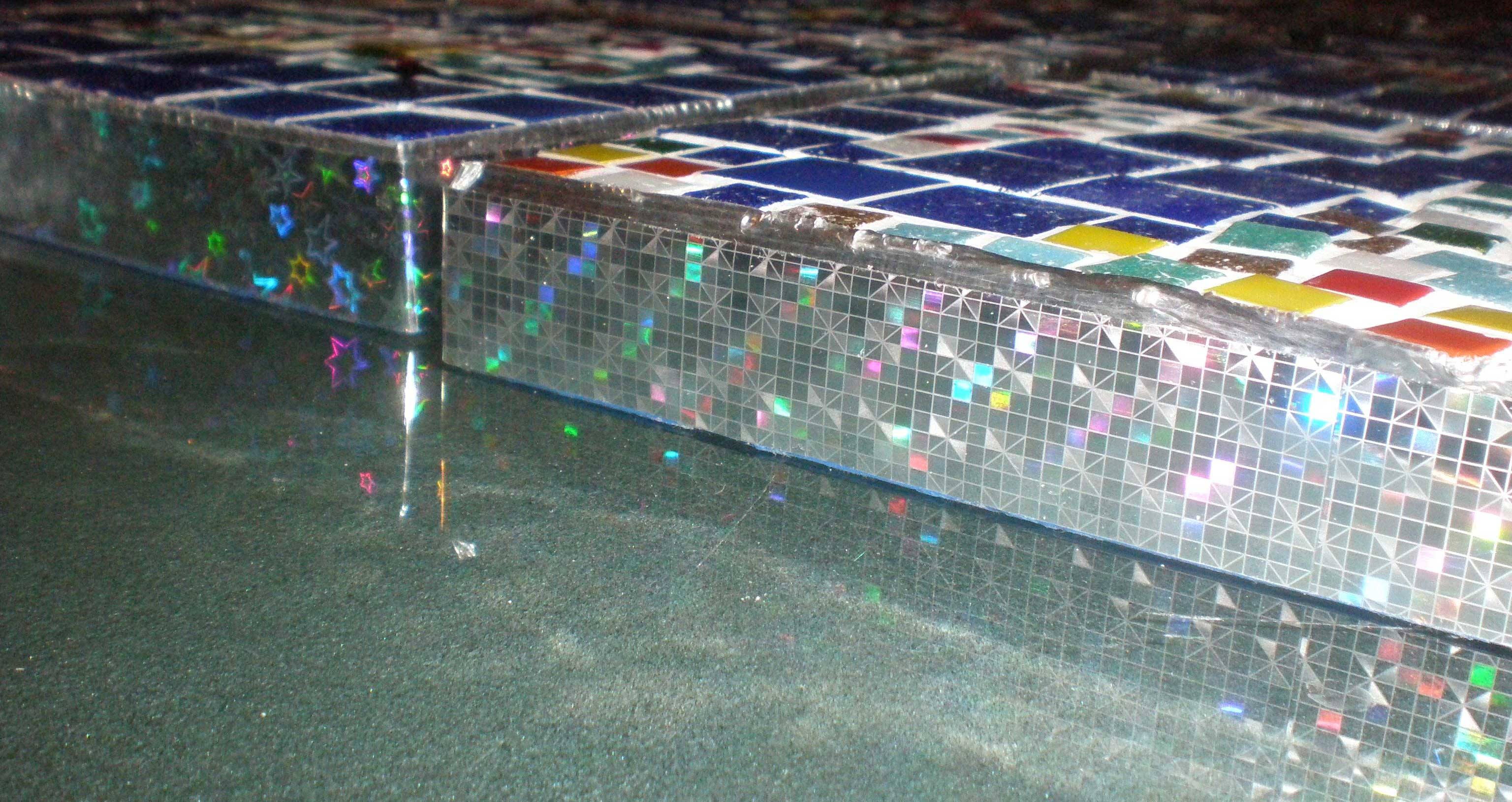Patterns and perspective in problem solving
Faced with a block of plywood, a grid, and two sizes of mosaic tiles—one is a quarter the size of the other—students design one of their initials. They struggle to make shapes appear to angle or curve using square patterns of 4 to 1. Up close, their attempts do not appear to be letters at all. Yet, when the perspective is changed a different picture emerges. This is what happens with any mathematical challenge. We have to zoom in to see what the challenge is and to collect important information and details. We might zoom out to see the whole picture, to determine what the goal is, to think, predict, or estimate. Next, we zoom in to see the details, to understand how the challenge works, what it needs; we choose a strategy and carefully try it out. We zoom out again to see if the strategy worked, if the results matched our prediction, if our estimate was even close. We’re not done until we’ve zoomed in once more, this time, to check our work. This exercise helps students learn that beautiful solutions are not all about the right or obvious answer. A creative approach to mathematical challenges often involves a search for patterns and many changes in focus. In this case, students were pleasantly surprised to see that, in most cases, their initial struggles did in fact result in recognizable and beautiful letters.






